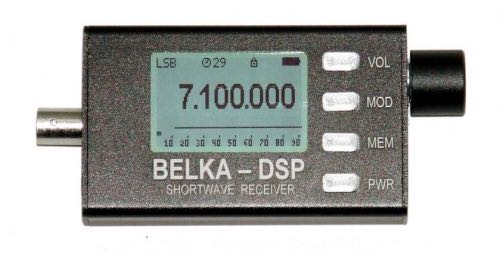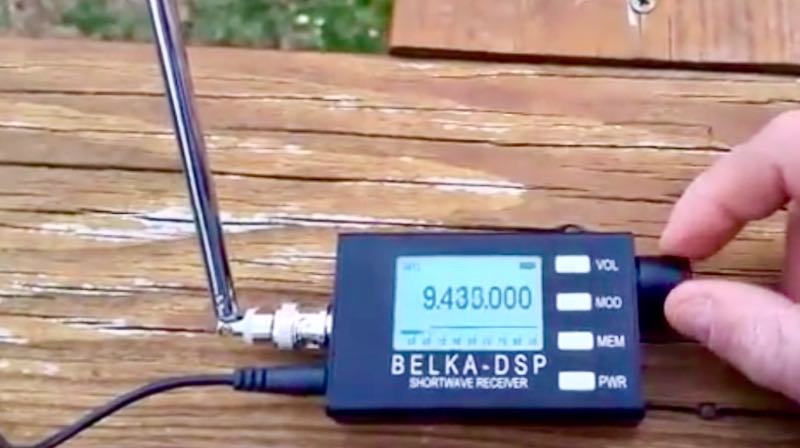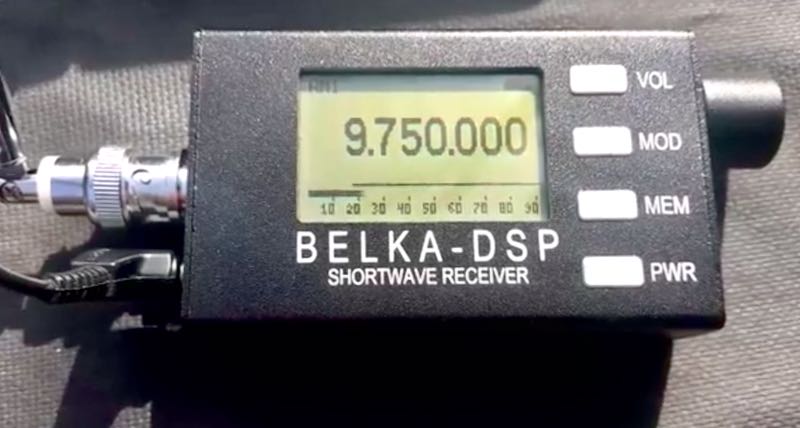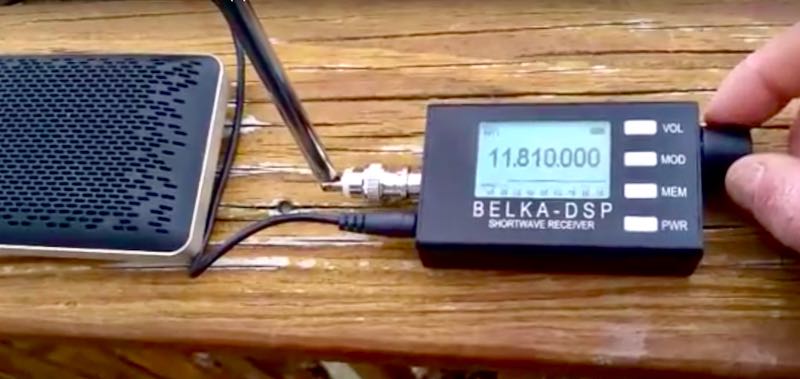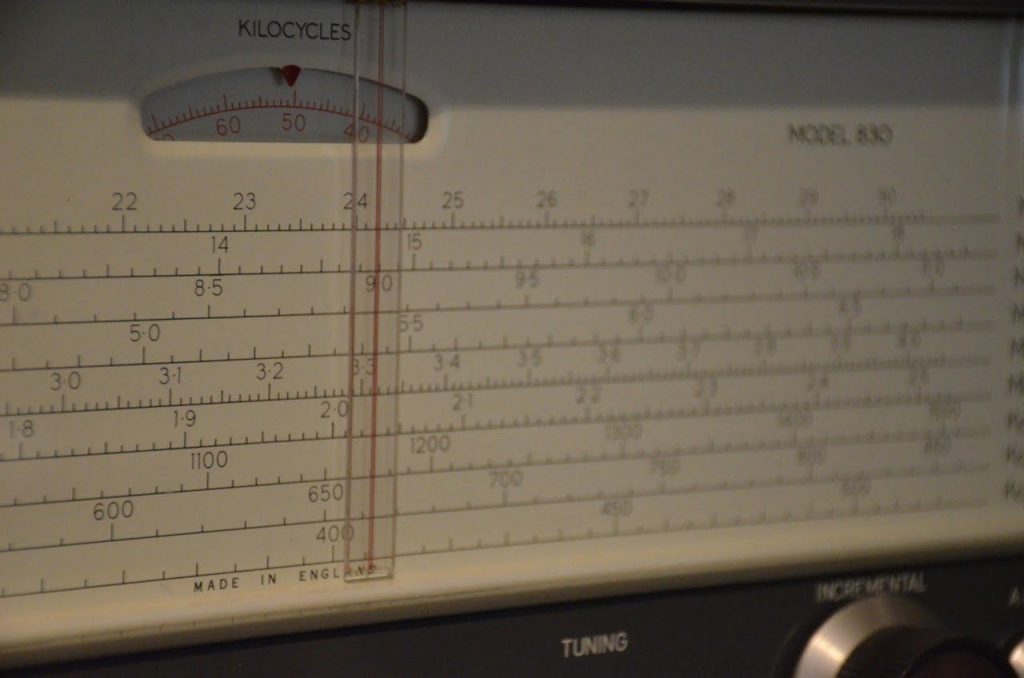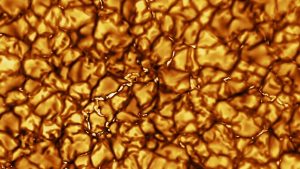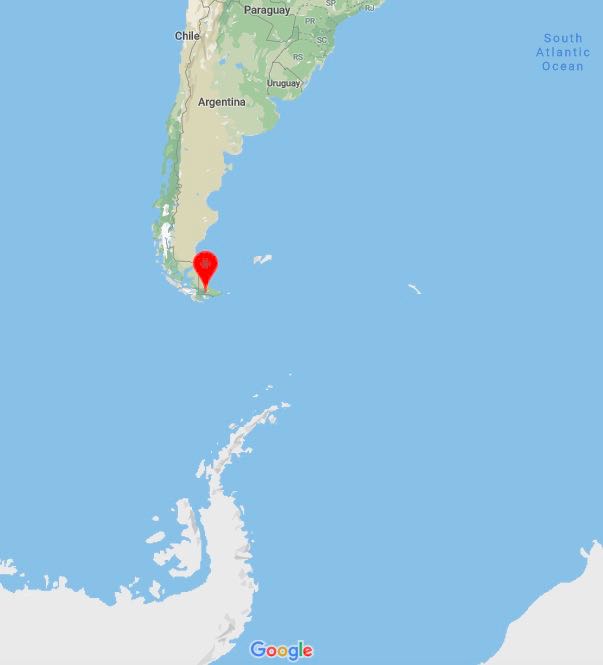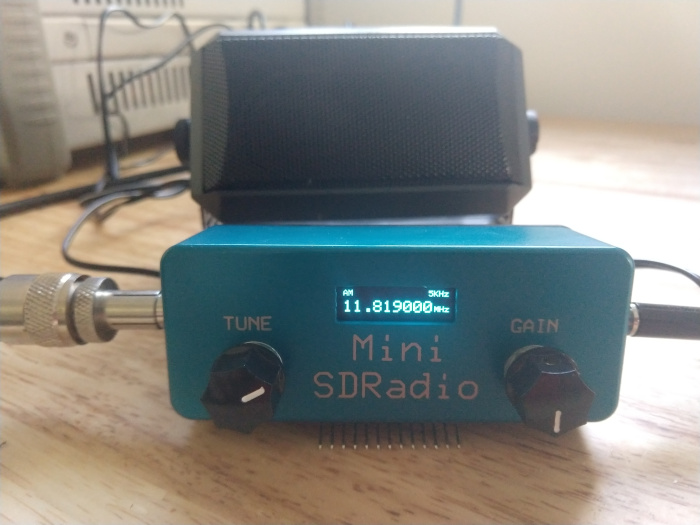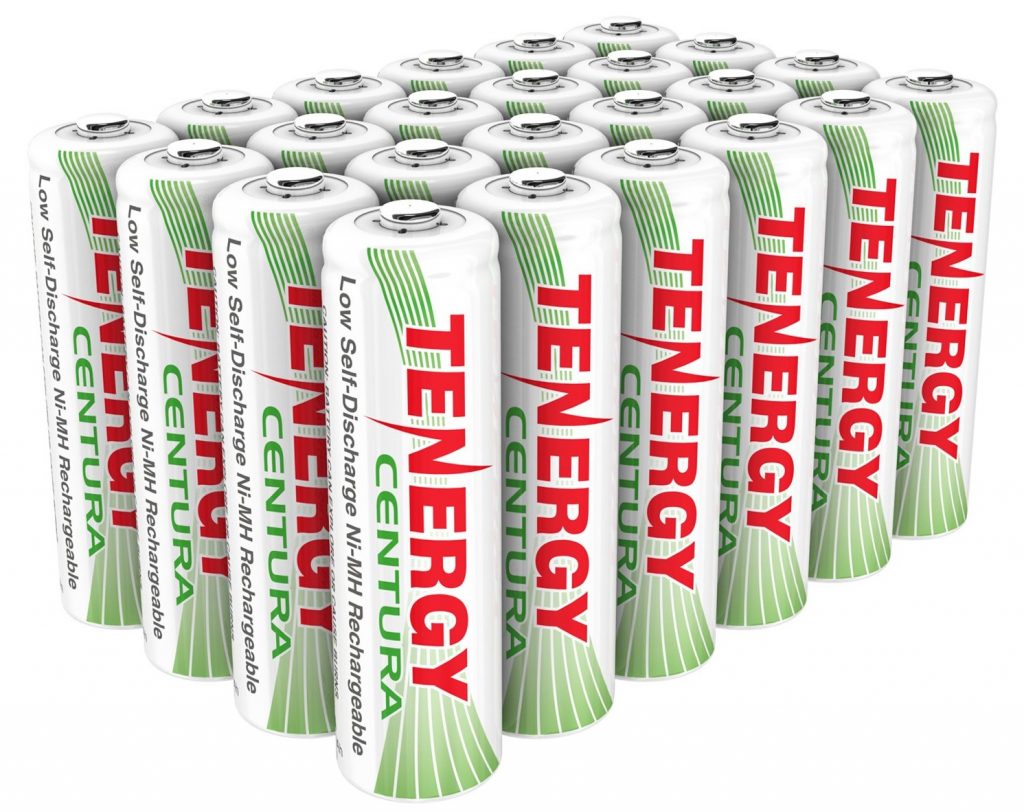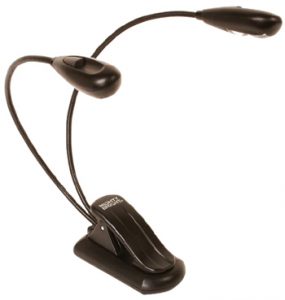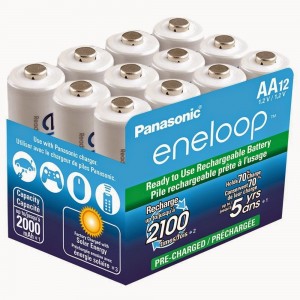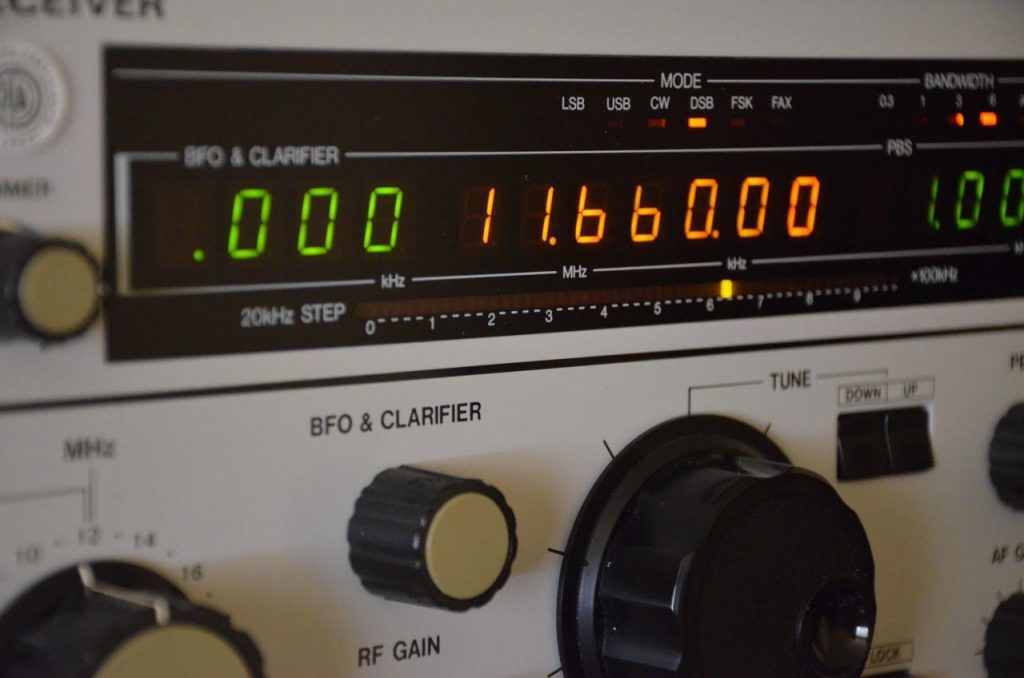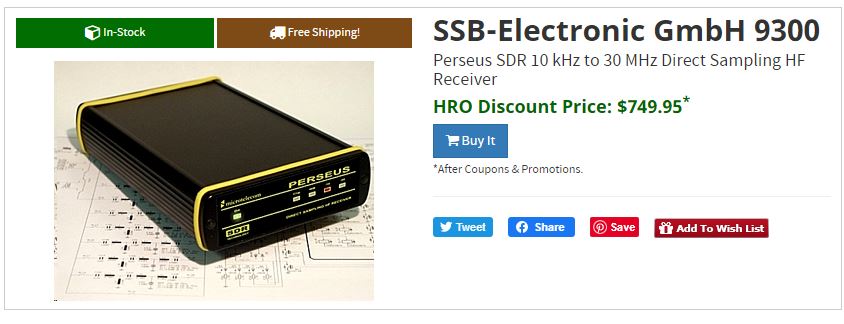Many thanks to SWLing Post contributor, Dan Robinson, who shares the following guest post:
An Initial Review of the Belka-DSP Shortwave Receiver
by Dan Robinson
A few weeks ago, during daily online excursions, I ran across the Belka-DSP receiver. This is not really a new receiver. Demonstrations have appeared on You Tube going back into 2019.
The Belka has a price of only about $120 U.S. I felt this was a fairly easy purchase, so I went to the website of Alex Buevky (EU1ME).
The receiver has a tuning range of 1.5 – 30 MHz – note that this is a revision from the description on the Belrig site, which still had a range starting at 3.5 mhz as of the time I am writing this.
The Belka is contained in a small heavy duty metal box – the size reminds one of a few boxes of matches put together – 85x50x20 mm with weight of about 100 grams. Indeed, the diminutive size is quite striking.
Viewing videos of the Belka, including several by Fernando Duarte who runs the FENU site, the immediate impression of the receiver is that it has really decent sensitivity and that it is quiet.
While the menu system appears to be a bit confusing, once you start using the receiver you get used to the logic of it. From the description of the SDR:
“It is possible to adjust the frequency band both from above, from 2.4 to 4.7 kHz, and from below from 50 to 300 Hz. In telegraph mode, the frequency band is constant, about 300 Hz, and its center is regulated from 500 Hz to 1 kHz.
The settings of the favorite radio stations can be stored in any of 32 memory locations.
The receiver does not have a built-in speaker, but there is a rather powerful VLF bridge that provides sufficient volume when working with an external speaker, speaker or headphones.
The built-in LI-Ion battery lasts for 24 hours of total operating time on the headphones.
In addition to the built-in battery, the receiver can also work from an external DC voltage source of 5 V.”
The Belrig site is English and Russian, which makes ordering easier. However, be aware that when you hit purchase using a major credit card you may receive a security alert from the card company. Once I confirmed, the process completed and I received a verification email from Belrig – quite quickly and efficient.
Communications with Alex has been excellent – he is very responsive to suggestions and input.
The SDR arrived in an excellent small heavy cardboard box wrapped with the typical packing tape for the Belarus postal system. The receiver itself and a telescopic antenna with BNC connector were wrapped in bubble wrap. No paper instructions – those are available directly at the Belrig site [click here to download PDF manual].
The only other item on the Belrig site is a Panoramic Adapter:
“designed for use as part of a radio receiving path of a transceiver/receiver jointly with a personal computer (PC) and SDR software” according to Belrig. This Pan@SDR “allows you to visually see the RF spectrum in a band up to 200 kHz as well as to receive and decode different modulation types (depending on a software type). . . [and] may be used without a transceiver as SDR-receiver with fixed oscillator (similarly to SoftRock RX), for example, to listen to amateur and broadcasting stations, to decode and to record telegraph stations with CW skimmer, to control signal quality, to calibrate frequency. It may be used as well as a selective millivoltmeter.”
An unboxing video of the Belrig SDR can be seen here:
Initial impressions
My house in Maryland is notorious for high noise levels – located on a corner, we are surrounded by electric wires on four sides. My attempts to overcome this with my many main premium receivers involve W6LVP, Wellbrook loops and one PAR-FED long wire located outside, with ANC-4 and other noise reduction efforts in my basement radio shack inside.
When I use various portable receivers upstairs in the den of my home, I usually have to keep them well away from incoming Xfinity/Verizon cable TV and Internet lines.
Usually, I am unable to hear much using portables such as SONY SW-55s and Panasonic RF-B65s while sitting on the sofa in the middle of this large family room due to noise from all of these cable lines.
However, interestingly – using the Belka-DSP receiver I was able to get decent reception at this spot. I attribute this to the metal construction of the receiver, compared to portables with plastic cases.
Certain portables, notably the CountyComm/Tecsun GP5/PL-360-365 are extremely sensitive to being handled, with substantial signal loss once your hand is removed from the cabinet. The Belka-DSP exhibits sensitivity to touch, but not as much signal loss as there is when you take your hands off a Tecsun PL-365.
I did notice a few frequencies on the Belka where there are digital artifacts – one occurs at or around 11,810 kHz, the BBC frequency. You can see that in the accompanying video as I tuned up from 11,810.
Others are noticed at various points all the way up through the receiver’s top tuning range of 30 MHz, though thankfully most are not in major SWL bands.
Digital audio artifacts are seen on portable receivers using IC chips, notably the XHDATA D-808 which has several annoying digi-burps on some key frequencies occupied by stations. On my D-808 for example, 9,650 kHz has a digital artifact that interferes with reception of Guinea.
Tuning on the Belka is simple once you get used to the steps. The knob on the right serves for tuning, selection of tuning steps, volume, high-low sensitivity, the various audio “cut-off” modes which essentially function as DSP selectivity. There are 32 memories. Modes are: LSB, USB, CW, NFM, AM1, AM2. For AM mode, AM1 is the most useful, as AM2 seems to be quite harsh in its various DSP audio modes.
The Belka is very sensitive to the type of speaker it is plugged into, assuming you are not using a bluetooth dongle. Connecting via a 3.5 mm cable to a basic Brookstone speaker that has bluetooth produced audio overloads on the Belka, requiring careful placement of the speaker in proximity to the radio.
Whether this had anything to do with the quality of 3.5 mm cable I was using, I am not sure. These audio overload issues were not present using the DSP only with a pair of quality SONY studio headphones. I have not tested the Belka yet with a bluetooth dongle. So be prepared to do some experimenting with speakers and cables.
As mentioned by one person on SWLing Post, the surprise when I received the Belka was that the tuning range is actually 1.5 to 30 MHz rather than 3.5 MHz shown on the Belrig description and in the video there.
This certainly makes the small Belka more attractive, though one wonders why it could not include the full medium wave band.
Also unclear is whether the Belka will have the capability in future for firmware updates, and addition of any new features such as bluetooth though I have to think that adding bluetooth would impact battery duration.
I posed four questions to Alex, including why he made the decision to have the battery soldered in rather than easily user replaceable with battery terminals, whether he is considering adding bluetooth capability, adding capability for firmware updates, and whether he is thinking about extending coverage to include the full medium wave band.
Alex thanked me for my “interesting questions” adding:
“Now Belka-DSP is a final product in this regard no updates or modifications are planned in the near future. We do think about the way how to improve this receiver, how to make it even more user friendly, but I can not say exactly which changes will take place and when. Looking forward for your future questions.”
Alex says that the Belka receivers ship out with batteries not fully charged to comply with post office regulations.
For me, the battery issue is a bit annoying. Similar to cellphones with built-in batteries this means that when the Li-Ion cell does deteriorate you are stuck with a bit of soldering to replace it – and I am not good at soldering.
Another example of this practice is the Pocket SDR made by Gerhard Reuter in Germany which uses flat Li-Ion batteries that are soldered in. If you have no problem using soldering irons, then none of this is a concern.
I can live without on-board Bluetooth, since dongles are available online. But I would like to see coverage of the full medium wave band and it would certainly be nice to have FM band coverage. Obviously the ability to update the radio’s firmware would be a welcome addition.
Another suggestion I would make to Alex would be to provide some way to quickly move from band to band, similar to the capability seen on most regular portables. Having to constantly press the side knob to switch to rapid 50 kHz slewing to move say, from 49 meters to 19 meters, involves too much fiddling.
It would be interesting to see the internals of the Belka radio – four Philips screws are located on the left and right sides of the receiver, so that should not be difficult, though I have chosen not to go exploring inside mine.
Summary
Overall, I am very impressed with the Belka. This seems to be an amazingly quiet and sensitive little receiver. It’s obviously similar to the CR-1a in that it has a display, but much smaller and perfect for Dxing on the road, with a BNC connector that enables connection of any amplified antenna, loops or longwires.
I have included a video made outside my house using only the BNC telescopic antenna with the Belka, showing reception at about 1800 to 1830 UTC of some major stations in the SW bands.
This demonstration shows how sensitive the Belka is in broad daylight hours (also shown is my SONY SW-1000T).
A search of YouTube shows at least two other handheld DSP receivers being demonstrated in 2019, both with full scope screens, seemingly experimental units and on Russian YouTube channels. There is some discussion of availability, but as of early 2020 these units do not seem to be available.
It’s unclear whether any of these units ever made it to production on any scale. Comparing the features on these to the Belka – including AGC, Noise Reduction, Squelch, etc – it seems there might be quite a bit of space on the open market for SDRs that far exceed the capabilities of the Belka.
On the other hand, inclusion of larger scope displays would clearly have implications for battery life, which is one area where the Belka SDR – with its claimed 24 hour duration – obviously excels.
I will be interested to read other user reviews of the Belka-DSP – for now, it appears to be the only receiver of its kind and size being produced in significant numbers, so I certainly want to thank Alex for bringing it to the market.
Thanks so much, Dan for sharing your review of the Belka-DSP. I agree that likely the reason the Belka-DSP is less prone to the effects of holding and grounding is because it has a metal case and is probably better shielded. I agree that there should be an easy way to move between the various meter bands. Including features like this is always a concern in terms of ergonomics for small radios with simplified controls.
It is a fascinating and unique little receiver. Since it’s designed and produced by a “mom and pop” company, I imagine upgrades won’t happen unless there’s a new version produced at some point. With that said, this engineer obviously has the know-how to make a capable receiver!
Thanks again, Dan, and we look forward to any/all updates you wish to share!
Click here to check out the BelkaDSP product page.
Do you enjoy the SWLing Post?
Please consider supporting us via Patreon or our Coffee Fund!
Your support makes articles like this one possible. Thank you!

